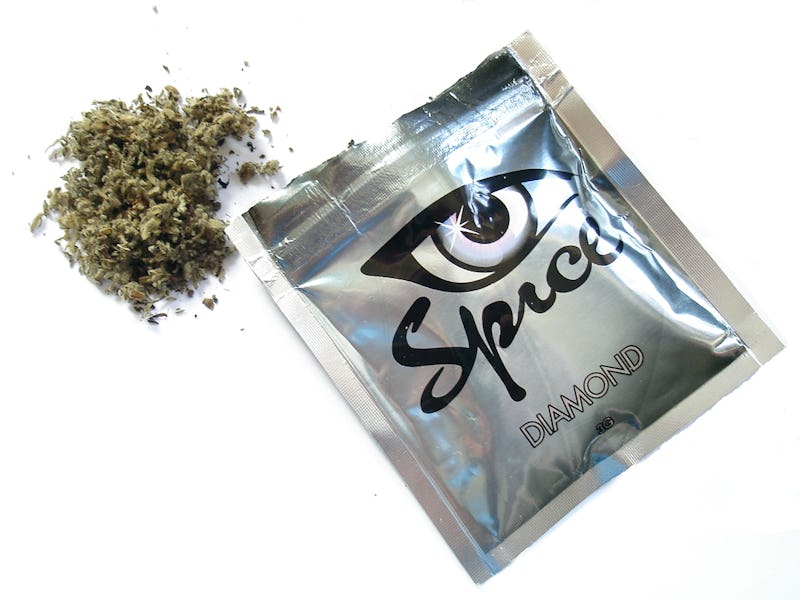Scientists May Have a Way to Counteract Dangerous Fake Weed
It could be the naloxone of synthetic cannabinoids.

Marijuana is safe to use, with almost no potential for overdose, but synthetic cannabinoids like Spice and K2 — which contain any of a huge number of chemicals — can cause serious side effects, including psychosis and possibly death. According to British scientists, though, there may be a way to reverse these dangerous effects. In a study published September 20 in the British Journal of Pharmacology, researchers found that they could reverse the effects of a synthetic cannabinoid overdose in mice. If this research can be adapted to humans, then it could provide an important life-saving intervention for people who accidentally overdose on synthetic cannabinoid products.
This study, conducted by post-doc Gareth Pryce and Professor of Neuroimmunology David Baker, both at Queen Mary, University of London, involved giving mice the synthetic cannabinoid 1-Naphthalenyl[4-(pentyloxy)-1-naphthalenyl]methanone — known more commonly as CB-13. The scientists observed the mice experience the well-known side effects of excessive CB-13, including sedation and hypothermia. Then, they gave the mice an inverse agonist, which reversed the effects within 40 minutes.
CB-13 and other synthetic cannabinoids work by binding to the same receptors in the human brain as THC — the active ingredient in marijuana — the CB1 receptor. These marijuana mimic drugs get people high by binding to these cannabinoid receptors in their brains. But many of these substances bind much more strongly than THC does, which is why their effects can be so much stronger and stranger than marijuana’s.
An inverse agonist helps reverse the effects of the synthetic cannabinoid by pushing the drug off of a person’s cannabinoid receptor and working in the opposite way. Researchers knew that reverse agonists could prevent people from getting high on synthetic cannabinoids if they were used before the drug, but this is the first strong evidence that inverse agonists can be used to actually reverse the dangerous side effects of synthetic cannabinoids after someone has used the drug.
Antagonists and reverse agonists haven’t had good luck with keeping people from using drugs, but this research suggests that they could be useful for treating overdoses. Previous research on using CB1 antagonists and reverse agonists long-term to keep people from using marijuana to get high didn’t pan out very well since these chemicals made people depressed, write the study’s authors.
“However, single-use cannabinoid antagonist therapy to block potentially life-threatening, cannabinoid-intoxication may be worth the remanufacture and testing for such an indication.”